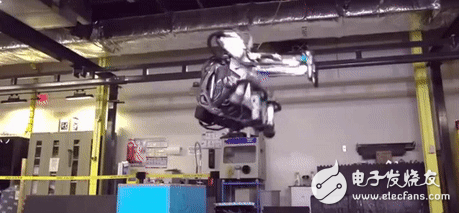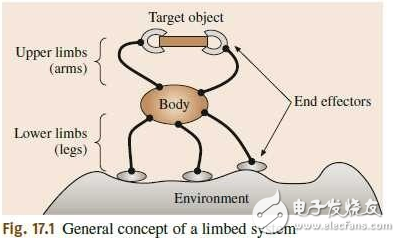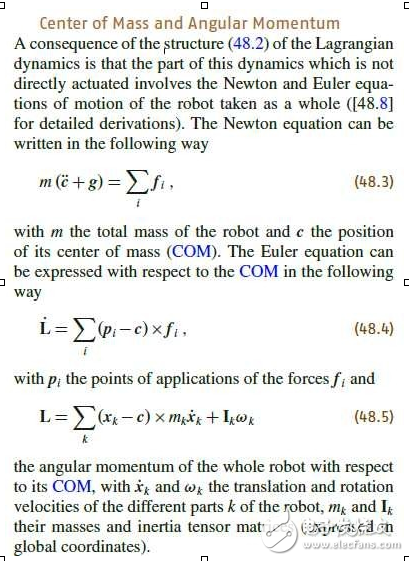The robots produced by Boston Dynamics often make you feel incredible. According to reports, Boston Dynamics has launched a robot called Atlas that smoothly completes a series of difficult "gymnastic exercises." After reading, Xiaobian feels that everyone Shocked, this kind of ordinary people don't necessarily do it, a robot actually does it so easily. On November 16, 2017, a video of Atlas jumping, spinning, and backflip almost astounded the entire robot circle, and the major media reported. This video of BD can be said to be frozen three feet. If you don't believe it, you can take a look at this video: let robot in MIT MIT MIT leg lab early work single-footed four-legged jumping robot More research results and videos can be found at: MIT Leg Laboratory. This is a story 30 years ago. If you want to learn about BD today, check out this website: Boston Dynamics is changing your idea of ​​what robots can do. | Boston Dynamics. In recent years, BD's products are still many, including Handle, SpotMini, Atlas, Spot, LS3, WildCat, BigDog, SandFlea and RHex. See Boston Dynamics | Boston Dynamics for details. Knowing that there is also a big god explaining what kind of company is Boston Dynamics? . BD was founded by Marc Raibert (Marc Raibert - Wikipedia) after leaving MIT LegLab. Marc Raibert founded Leg Lab in CMU in 1980, left CMU in 1986, and went to MIT until 1995. In 1992, he founded Boston Dynamic, a simulaTIon and roboTIcs company. After the company was founded, they served many military agencies, including the Defense Advanced Research Projects Agency (DARPA), and even received tens of millions of dollars in investment from the Department of Defense. At this time, BD and Gill Pratt have inseparable links, and Gill Pratt is a student of Marc Raibert. Gill Pratt is the head of the former DARPA Robotics Challenge, so it is reasonable for BD to continue to invest in DARPA. BD was acquired by Google in 2013, but in 2016, Toyota reported that it would take over the BD of Google (Toyota took over the six major reasons for Google's Boston Power - Baijia). At this time, Gill Pratt left DARPA, Toyota Research Institute. (TOYOTA Research InsTItuTIon, TSI). Later the news was gone. In 2017, BD was acquired by SoftBank. The book goes back to the original, after probably understanding the BD, the following review of Atlas's classic action - backflip. 1 Before introducing the Atlas back flip technique, let's introduce some preliminary knowledge. 1. Atlas belongs to a type of Limbed system (P419-441 of Spring Handbook of Robotics), with a few pictures attached. 2. Further refinement, Atlas belongs to Legged Robots (P1203-1263 of Spring Handbook of Robotics). The difficulty of Altas is not the backflip action. The difficulty is the motion planning before the backflip and the control after touching the ground (for example, how to maintain balance, how to control contact force, etc.). (One of the major difficulties in making a legged robot walk or run is keeping its balance: where should the robot place its feet, how should it move its body in order to move safely in a given direction, even in case of strong perturbations? This difficulty comes from the fact that contact forces with the environment are an absolute necessity to generate and control locomotion, but they are limited by the mechanical laws of unilateral contact). 1) The Dynamic of Legged Locomotion The most critical of Atlas is dynamic modeling, which is based on Lagrangian and Newton and Euler models. The above paragraph can explain that the backflip is not difficult, as explained below: At Flight Phases, Atlas is not in contact with the environment, so there is no contact force f_i, and the Newton equation is simplified to: The process in the air is actually a parabolic motion, so there is no way to change the Atlas movement in the air. The Euler's formula in the above equation can be simplified as: In this case, Atlas can control both the movement of the joint and the overall rotation, provided that it is before landing. In summary, Atlas can't change the movement during the air movement, but it can change the posture, that is, the back flip or the front flip and other complicated actions, as long as the action is completed before landing, of course, the gait needs to be done before jumping. Planning for sports and so on. 2) In Contact with the Ground The contact surface includes flat ground or multiple surfaces. The contact surface in the video is approximately flat. If it is multiple surfaces, it will be more complicated in control. Regardless of the contact surface, Atlas's instantaneous contact force with the ground is very large, so there is a very high demand for the motor, BD is very smart, using hydraulic servo control. If it is a motor, it may explode in minutes. Even for hydraulic servo control, consider active or passive compliance. Personally feel that the balance after landing is relatively simple compared to the balance of walk or run. If you can control the balance during walk or run, it may be easier to balance after landing, but when you touch the ground after jumping Force control becomes a difficult point. Time design in the air is especially important. If the time is short, Atlas will not be able to flip; if it is a long time, Atlas needs to constantly adjust the posture to ensure a balanced action before touching the ground. Of course, the whole process is not so simple. The following references are given. Interested friends can read the following content (P1206-1263 of Spring Handbook of Robotics). 1 In Contact with a Flat Ground: The Center of Pressure. In Contact with Multiple Surfaces. 2 Contact Models. 3 Compliant Contact Models. 4 Rigid Contact Models. 5 Hybrid and Nonsmooth Dynamics. 6 Stability Analysis - Not Falling Down. 7 Generation of Dynamic Walking and Running Motions. 8 Motion and Force Control. 9 Towards Move Efficient Walking. 10 Diffenert Contact Behaviors. The content is too much, it is impossible to explain it clearly through an article, so only the general explanation and content are given, which is the effect of throwing bricks and jade. Wired Industrial Barcode Scanner Wired Industrial Barcode Scanner,Zebra Industrial Barcode Scanner,Industrial Fixed Barcode Scanner,Zebra Industrial Scanner Guangzhou Winson Information Technology Co., Ltd. , https://www.barcodescanner-2d.com


